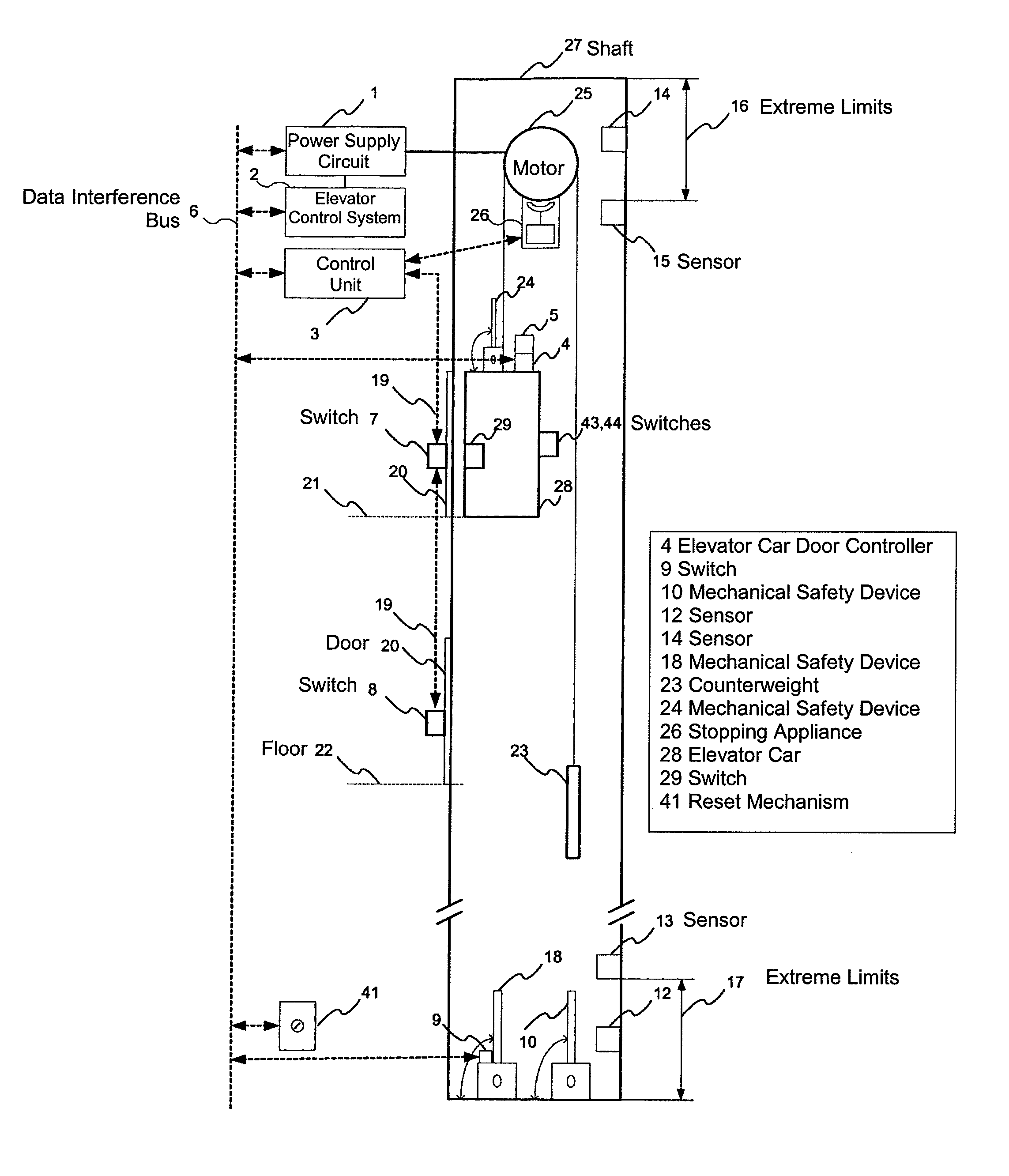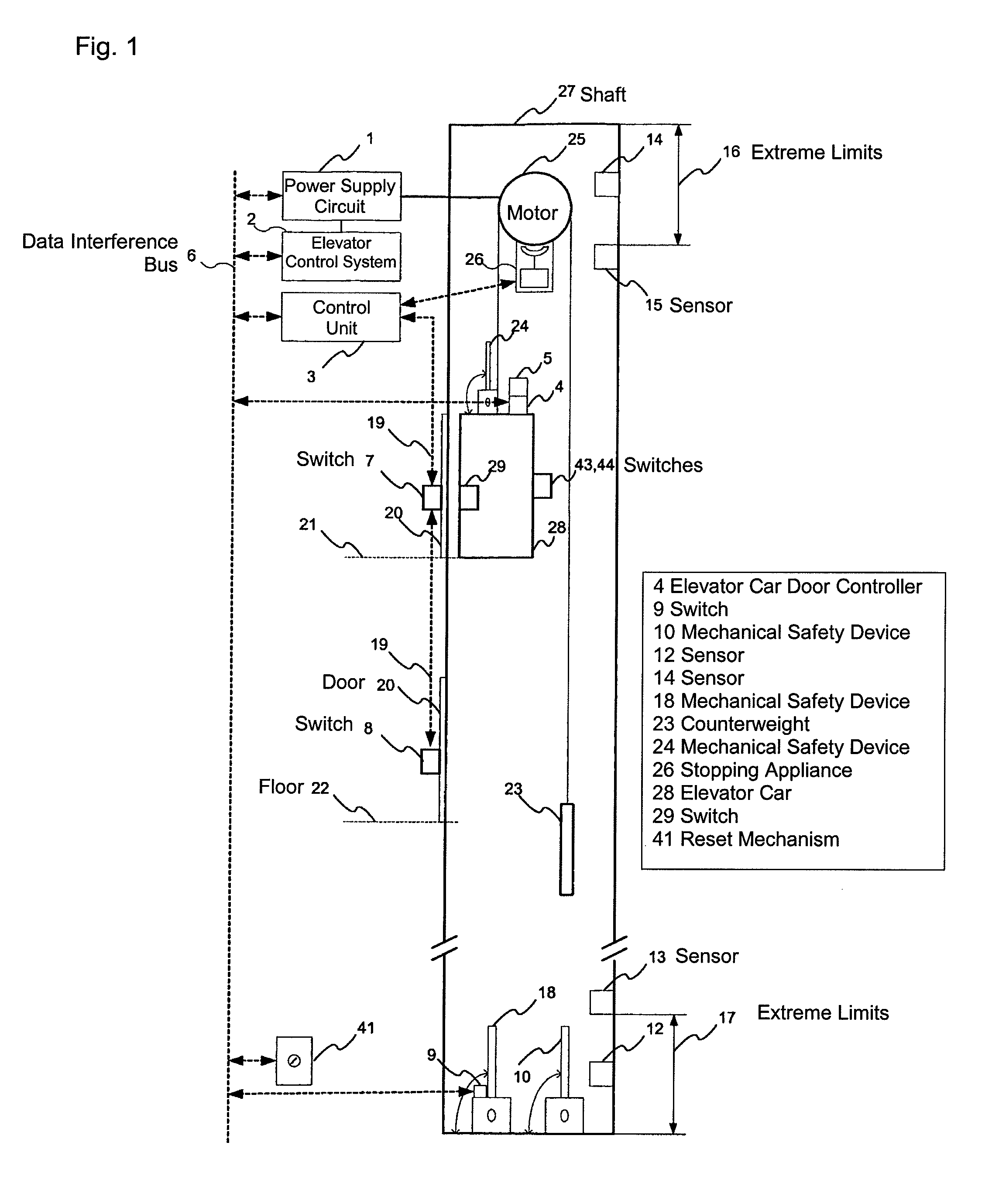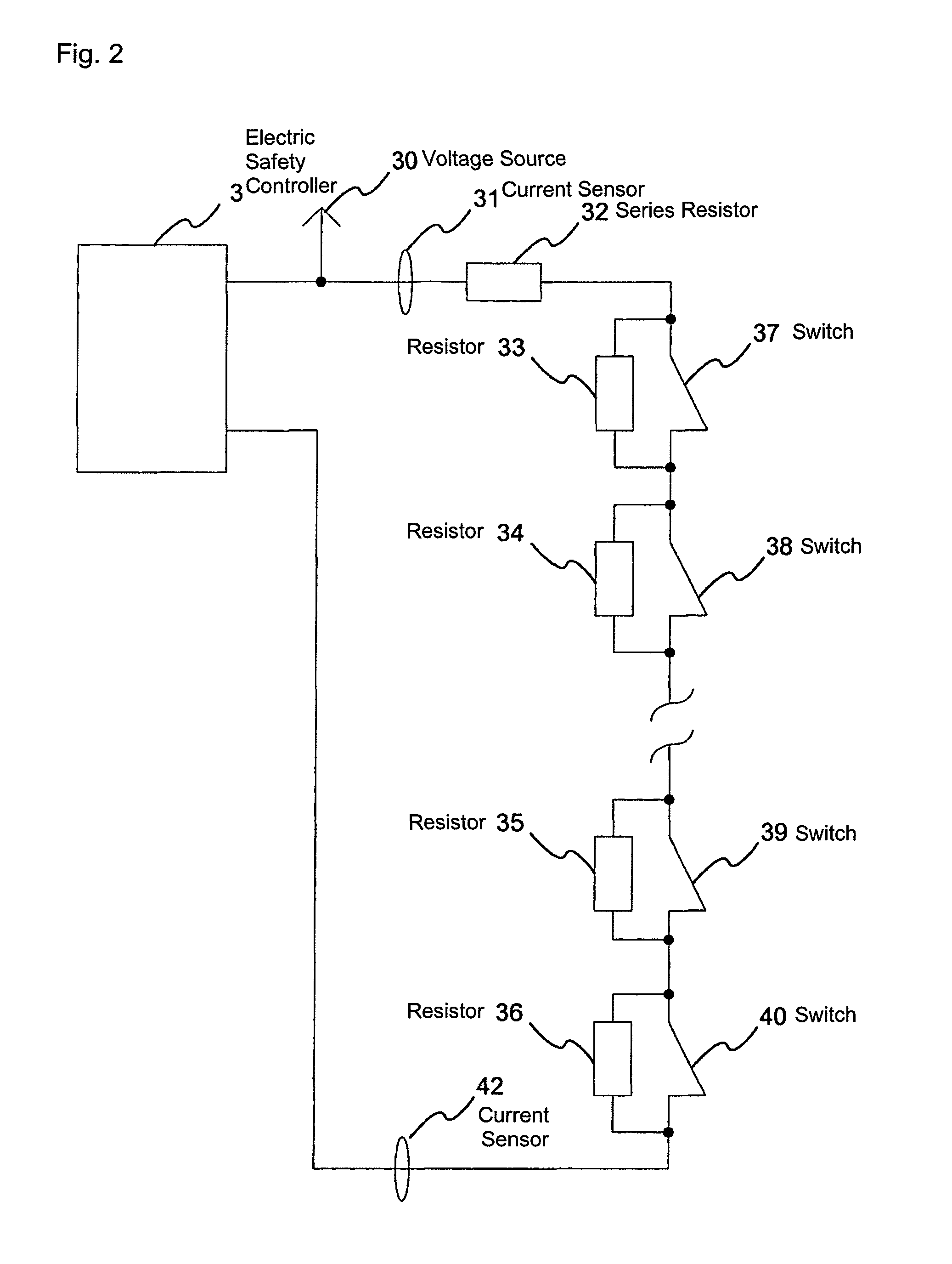Elevator safety arrangement having safety spaces
a safety space and elevator technology, applied in the direction of elevators, building lifts, transportation and packaging, etc., can solve the problems of difficult alternative consideration, inability to extend the shaft upwards or downwards in most cases in construction technology or at least too expensive, and difficulty in determining the alternative, so as to reduce the number of short-duration breaks and reduce the number of malfunctions of the elevator system , the effect of improving the reliability and utilization rate of the elevator system
- Summary
- Abstract
- Description
- Claims
- Application Information
AI Technical Summary
Benefits of technology
Problems solved by technology
Method used
Image
Examples
Embodiment Construction
[0059]FIG. 1 represents an elevator system applying a safety arrangement according to the invention. An elevator car 28 has been fitted to travel in an elevator shaft 27 from floor to floor 21, 22. This elevator system according to the invention also comprises a counterweight 23, but the elevator system of the invention may also be implemented without a counter-weight. The elevator motor 25 is disposed in the elevator shaft, but it may also be placed in a machine room.
[0060]The extreme limits of movement of the elevator car in the elevator shaft are determined by end limit markers 12, 13, 14, 15. During normal operation, the elevator car travels between the extreme limits determined by end limit markers 12, 14. When the mechanical safety devices 10, 18, 24 have been set into their active position, the elevator can only be operated in maintenance mode within the shaft portion defined by end limit markers 13, 15. Fitted in conjunction with the elevator car are end limit marker readers...
PUM
 Login to View More
Login to View More Abstract
Description
Claims
Application Information
 Login to View More
Login to View More - R&D
- Intellectual Property
- Life Sciences
- Materials
- Tech Scout
- Unparalleled Data Quality
- Higher Quality Content
- 60% Fewer Hallucinations
Browse by: Latest US Patents, China's latest patents, Technical Efficacy Thesaurus, Application Domain, Technology Topic, Popular Technical Reports.
© 2025 PatSnap. All rights reserved.Legal|Privacy policy|Modern Slavery Act Transparency Statement|Sitemap|About US| Contact US: help@patsnap.com



